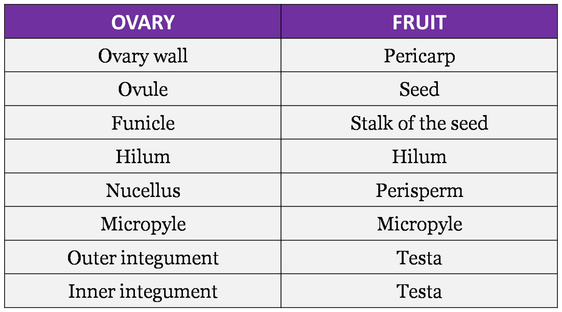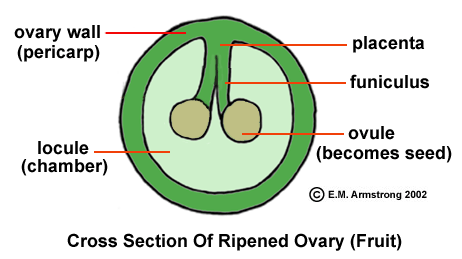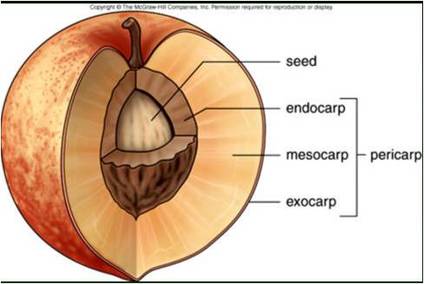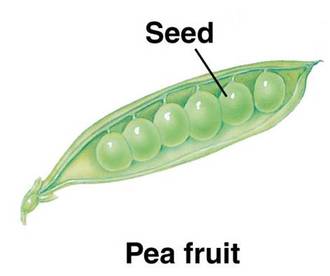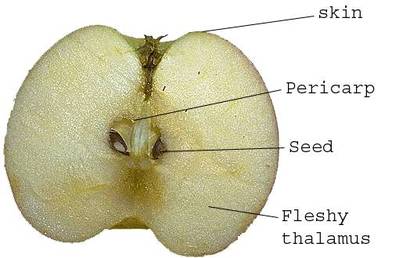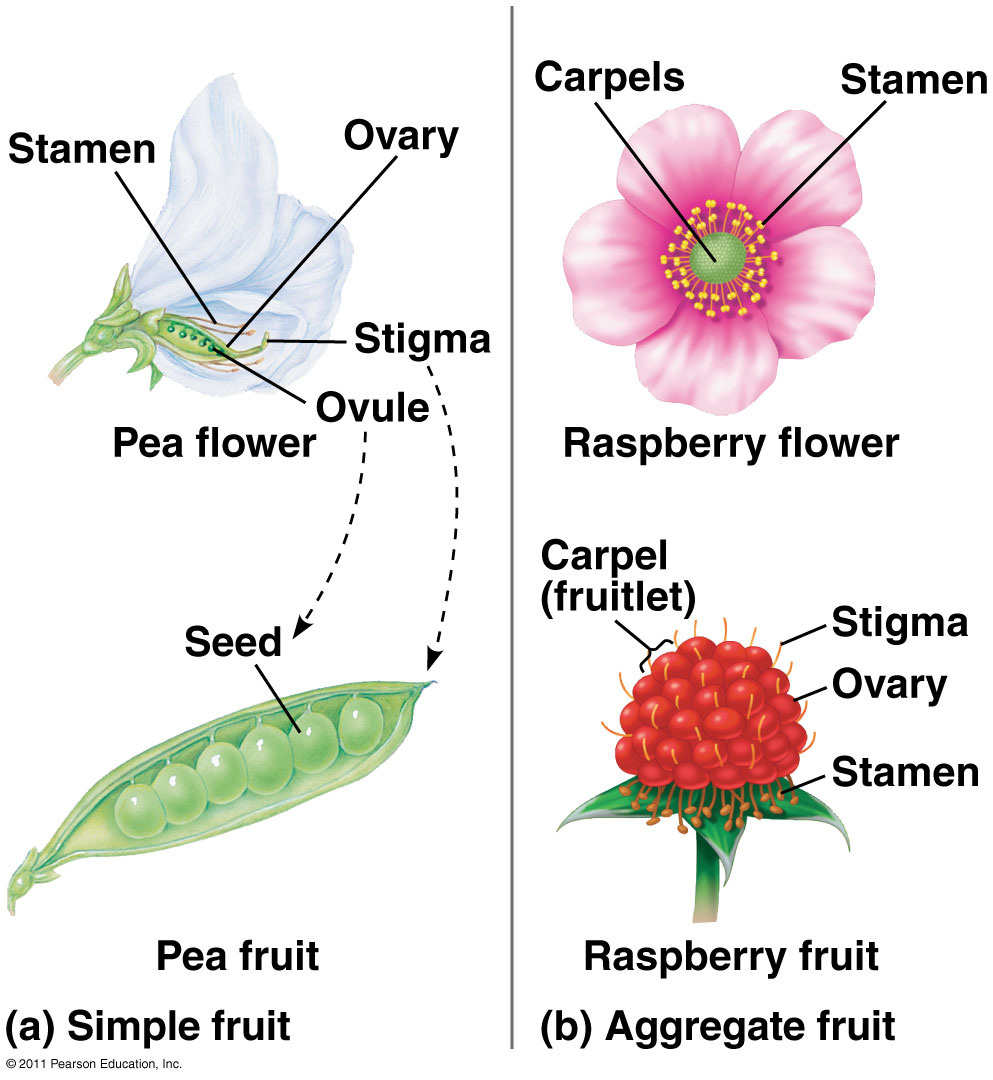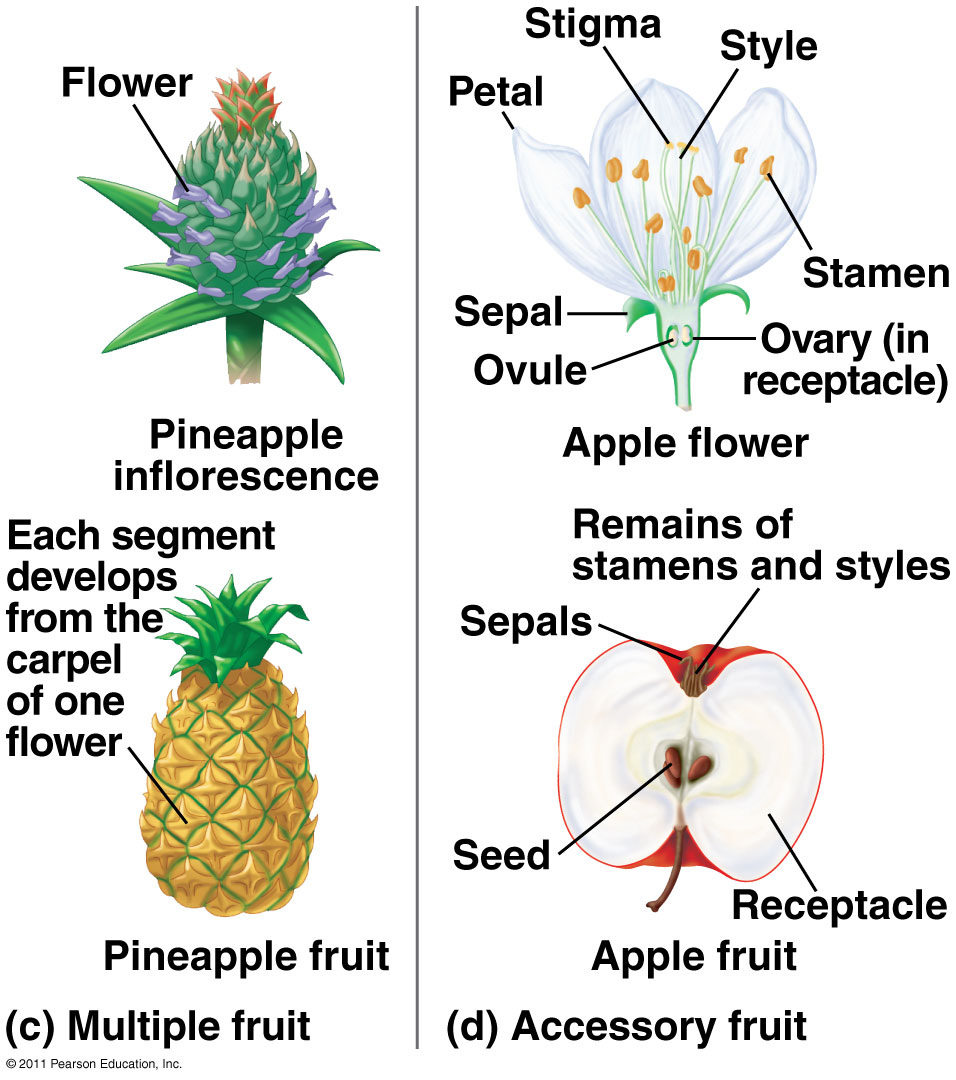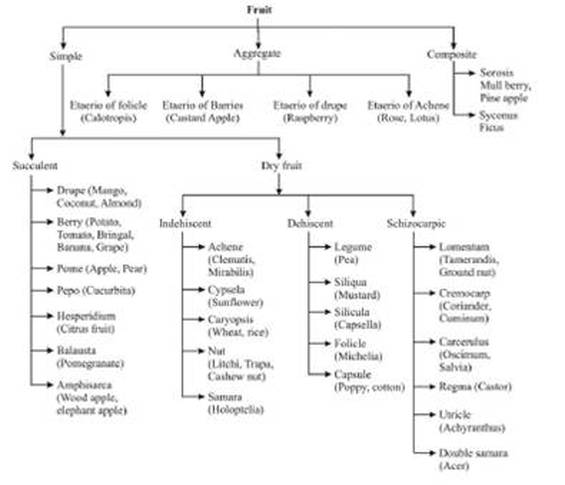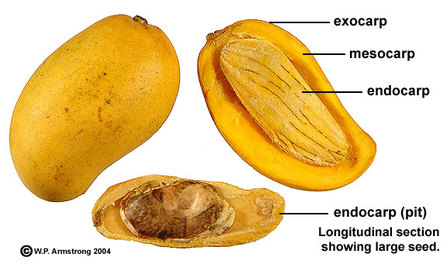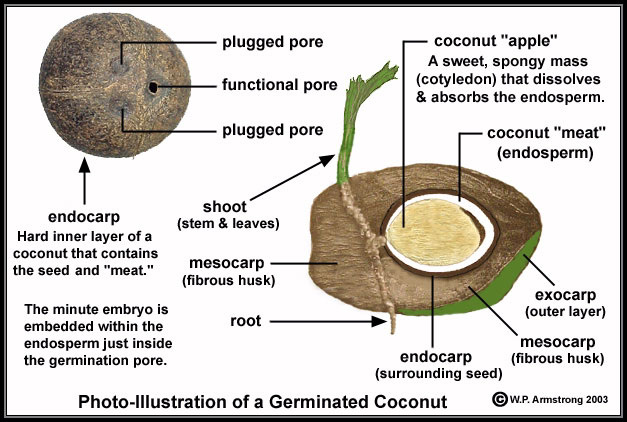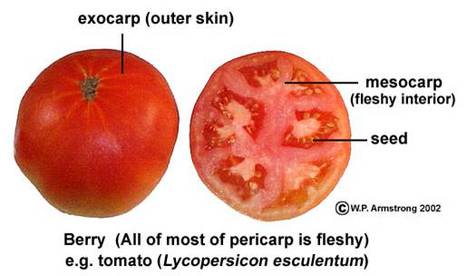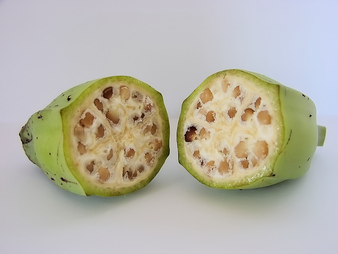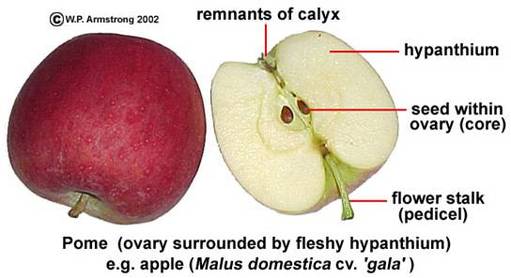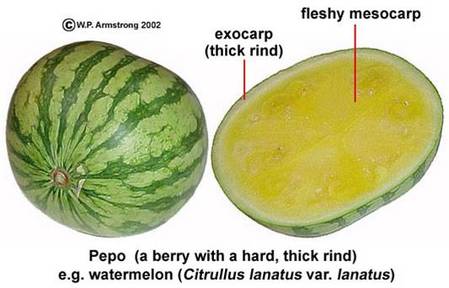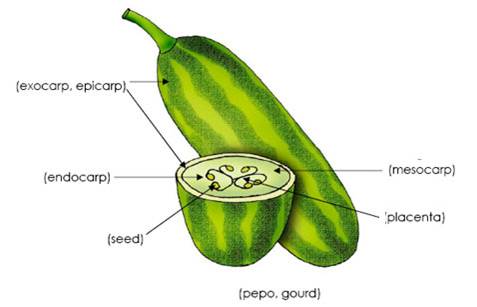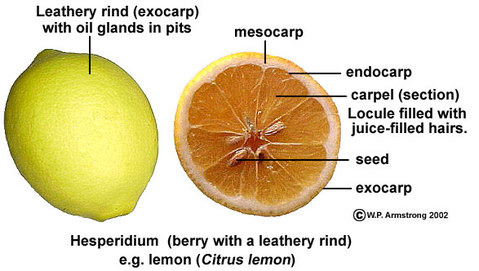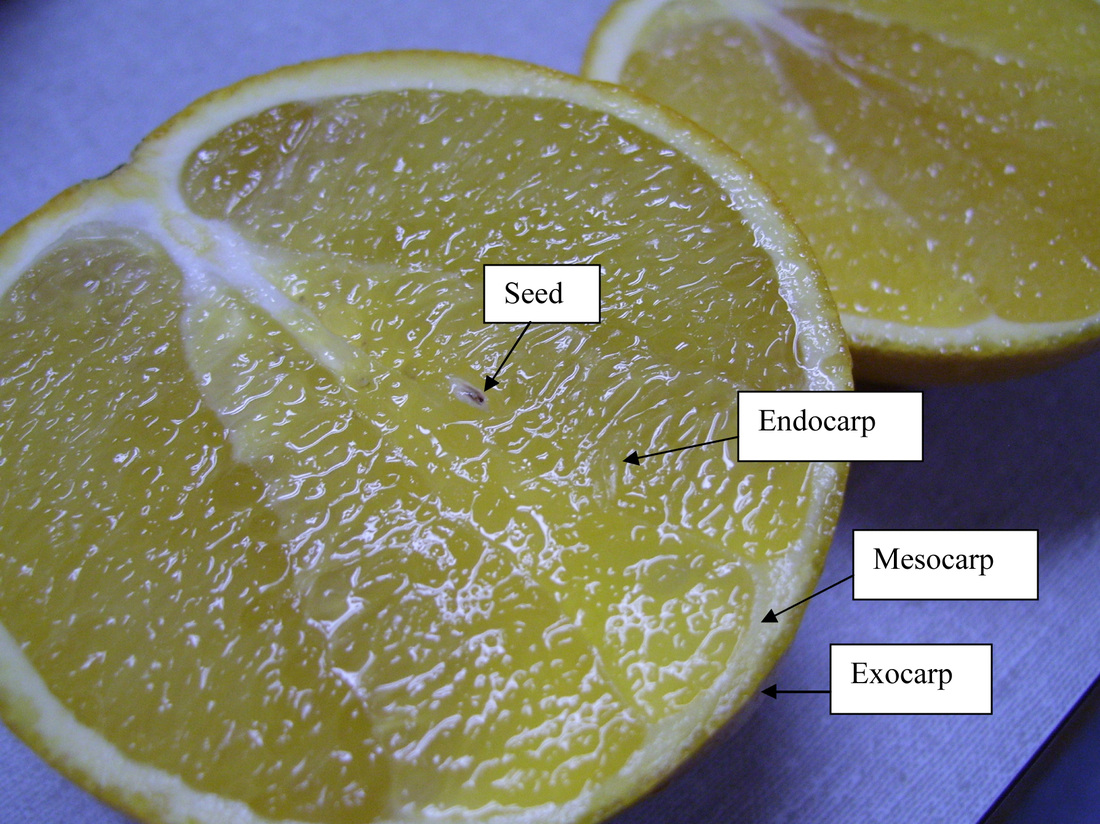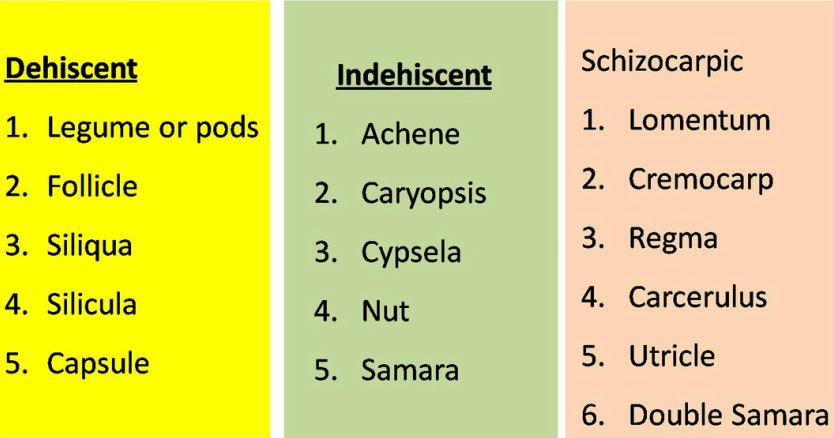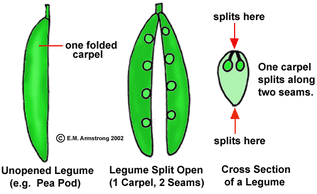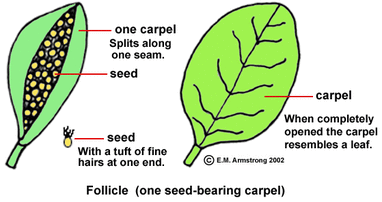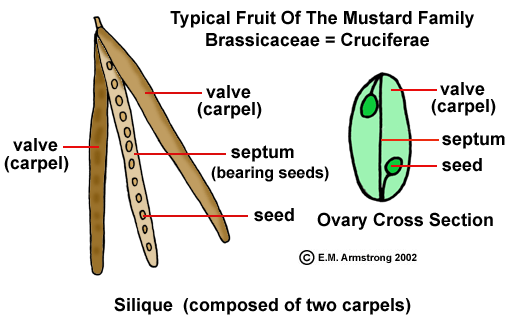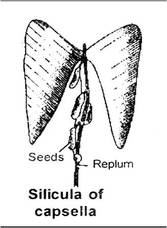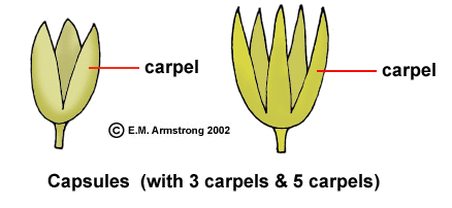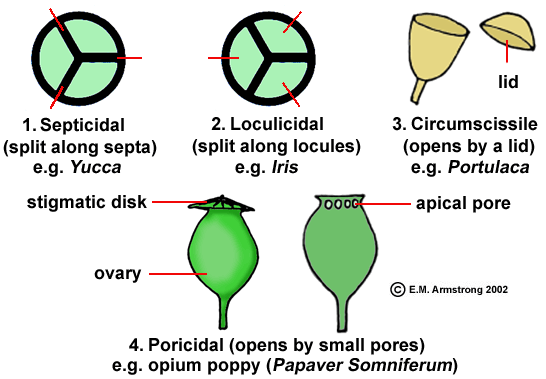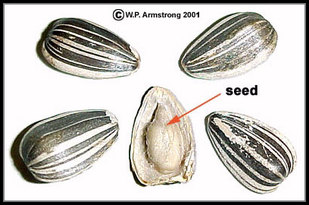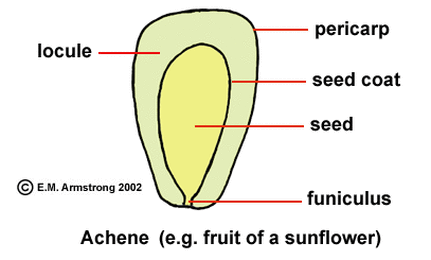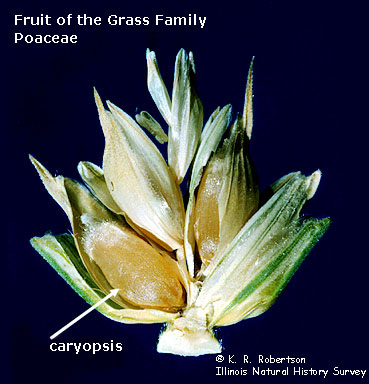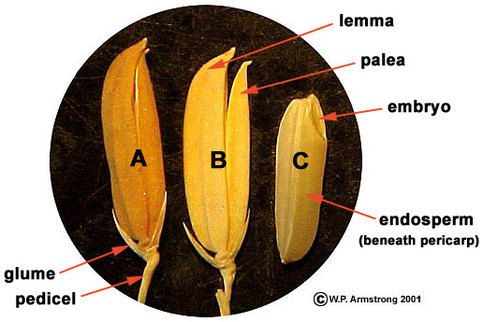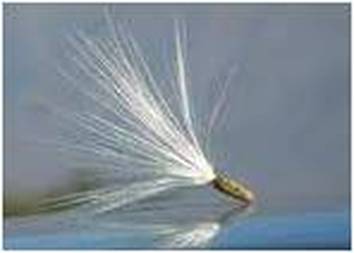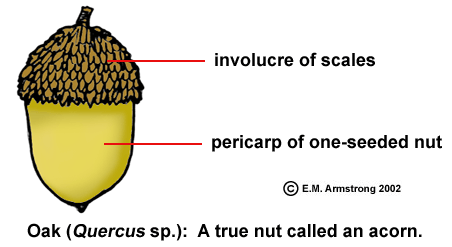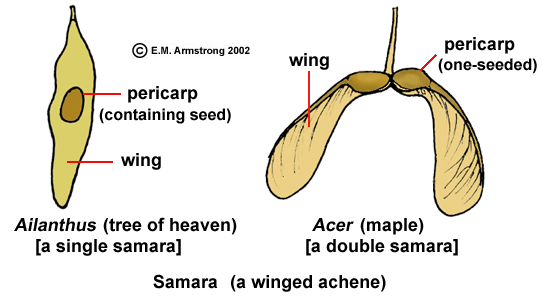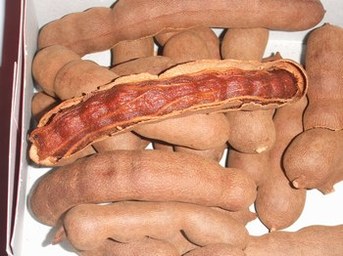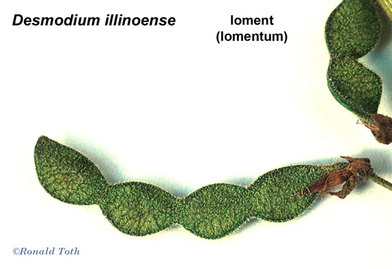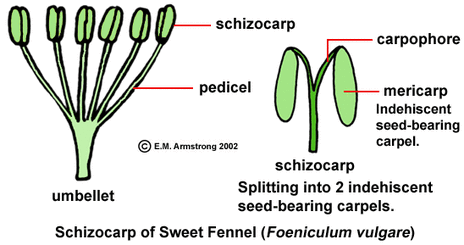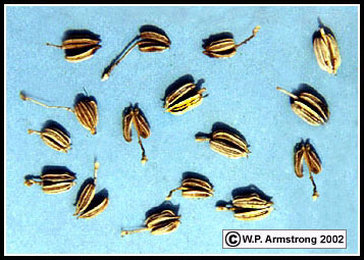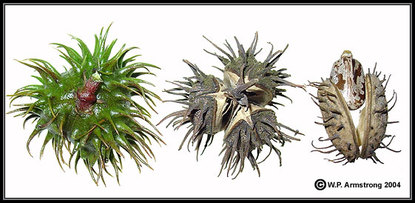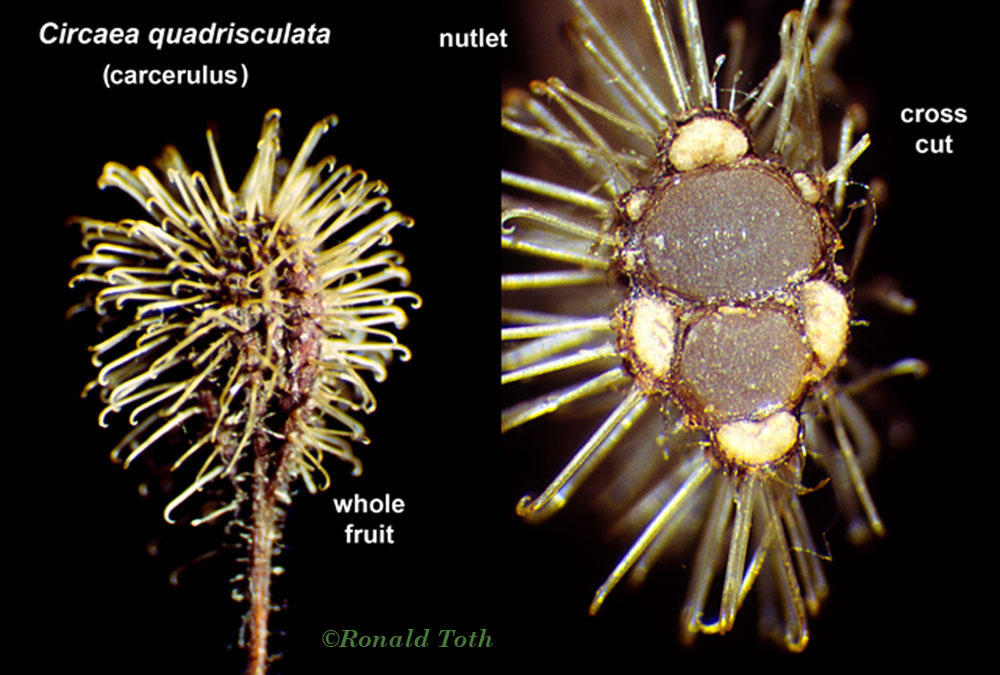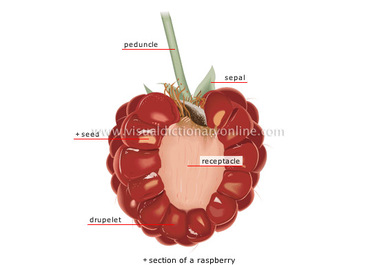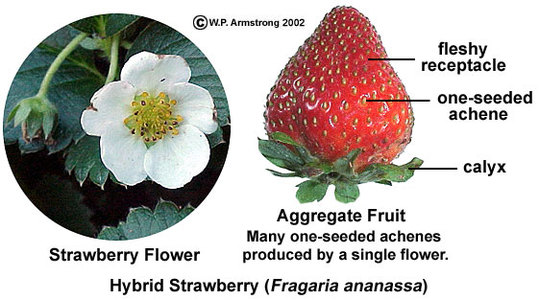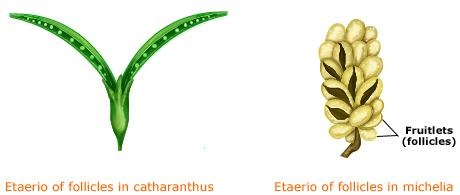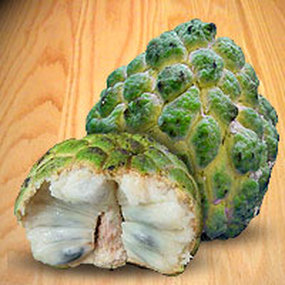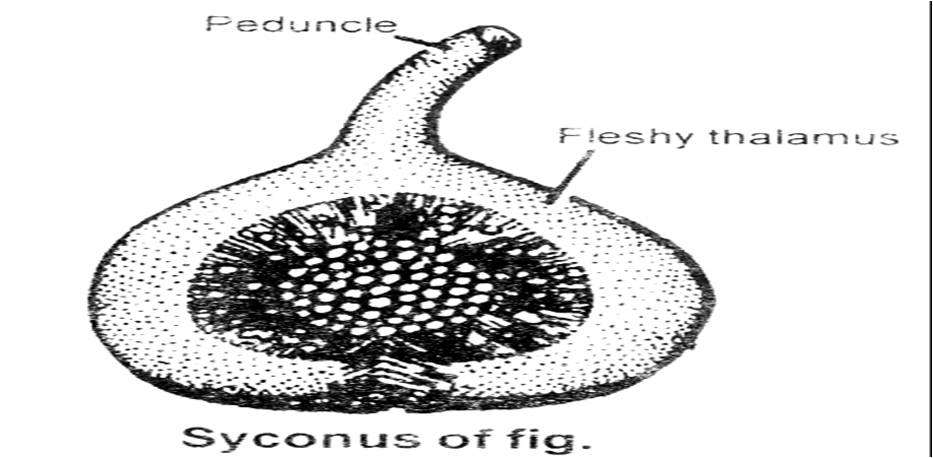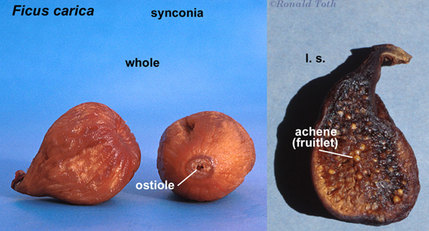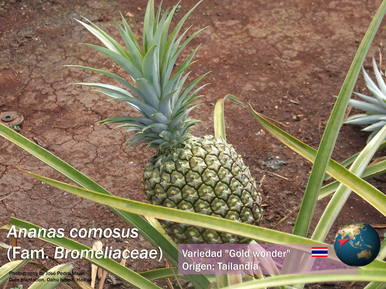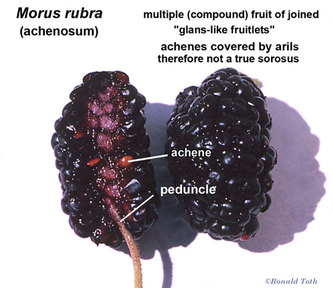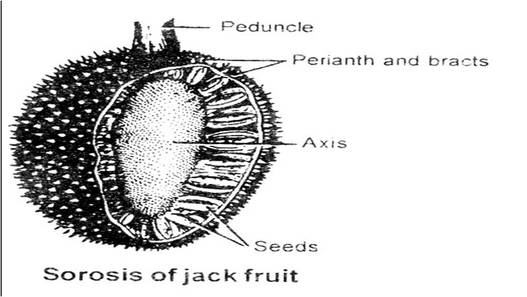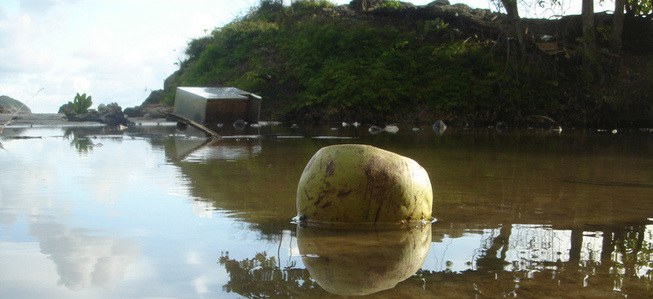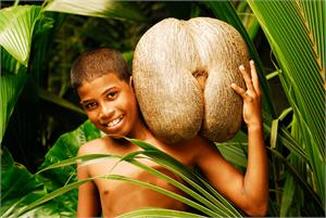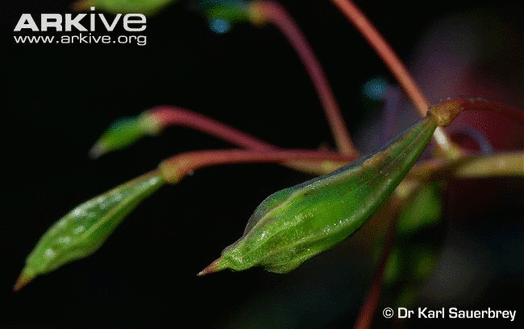ISC 12>CONTENT>STRUCTURE AND FUNCTION OF PLANTS>6. SEEDS AND FRUITS
- Seed and fruits (broadly classified). : Fruits to be classified into simple (dry and fleshy), aggregate and multiple.
- Apomixes, Polyembryony, Parthenocarpy.
- Significance of seed and fruit formation.
|
|
|
FORMATION OF SEED AND FRUIT
- The fertilized ovule increases in size and develop into a seed.
- The ovary develops into fruit after fertilization and thus morphologically the fruit is ripened ovary.
- The fate of various parts of the ovary in the formation of fruit is summarized below.
THE FRUIT
- The fruit is a mature or ripened ovary .
- A fruit consists of pericarp, that develops from the ovary wall, and seed derived from ovule.
- The pericarp may be thin or thick and is usually differentiated into an outer epicarp, a middle mesocarp, and an inner endocarp. But in dry fruits, the pericarp is undifferentiated and is usually papery or woody.
CLASSIFICATION OF FRUITS
A) TRUE FRUITS AND FALSE FRUITS
|
TRUE FRUITS :
|
FALSE FRUITS :
|
B) ON THE BASIS OF NATURE OF PERICARP, NUMBER OF CARPELS, FUSION BETWEEN CARPELS
I: SIMPLE FRUITS
- Those fruits which are derived from a single carpel or more than one fused carpels of a flower with or without participation of accessory parts are known as simple fruits.
- A simple fruit can be classified as follows:
- Fleshy fruits
- Dry Fruits
SIMPLE FRUITS: FLESHY FRUITS:
- These fruits may be divided into the following categories.
- DRUPE
- BERRY
- POME
- PEPO
- HESPERIDIUM
1. DRUPE: [Seed enclosed within a stony endocarp (pit)]
- These fruit develops from mono or multicarpellary, syncarpous, superior ovary. In these fruits, endocarp is hard and stony so these fruits are also called stony fruits.
- Examples : cherry (Prunus spp.), olive,
coconut (Cocos nucifera), peach (Prunus persica), Mango (Mangifera indica) and plum (Prunus domestica).
2. BERRY
- These fruits develop from mono or multicarpellary syncarpous ovary.
- Ovary may be superior or inferior, Placentation is axile or parietal. In these epicarp is thin and seeds are embedded in fleshy part.
- Examples: Banana (Musa sp.), Tomato (Lycopersicon)
3. POME
- This fruit develops from bi or multicarpellary syncarpous inferior ovary. The rind and fleshy pulp are made up of thalamus. The main part of ovary is hard and dry and remain inside the fruit. Seeds are present in it.
- Example: Apple and Pear.
4. PEPO
- These fruit develops from tricarpellary, syncarpous and inferior ovary. This fruit is unilocular and have parietal placentation. These fruits are fleshy and spongy
- Berry with a hard, thick rind; typical fruit of the gourd family (Cucurbitaceae )
- Examples : Watermelon (Citrullus), Cucumber (Cucumis)
5. HESPERIDIUM
- This fruit develops from multicarpellary, syncarpous, superior ovary.
- Epicarp of these is made up of thick rind which is leathery and many oil glands are found in it.
- Mesocarp is white fibrous structure which is attached with epicarp.
- Membranous endocarp projects inward and form many chambers. Many glandular hairs are present on the inner side of endocarp. These glandular hairs are only edible parts.
- Examples: This fruit is specially found in plants of Rutaceae family. eg. Orange, Lemon, Citrus fruit.
SIMPLE FRUITS: DRY FRUITS
A) DRY DEHISCENT FRUITS (Split Open At Maturity)
1. LEGUME (One carpel that splits along two seams)
2. FOLLICLE (One carpel that splits along one seam.)
3. SILIQUA (Two carpels separated by a seed-bearing septum)
|
4. SILICULA
|
5. CAPSULE
B) DRY INDEHISCENT FRUITS [Do Not Split Open At Maturity]
1. ACHENE
- It is a small fruit containing a single seed. The seed is attached by a funiculus, but the seed coat is free from the inner wall of the pericarp.
- The seed is essentially free within the pericarp wall, except where it is attached at the placenta.
- The achene is the typical fruit of the sunflower family (Asteraceae).
2. CARYOPSIS (GRAINS)
- These are small, single seeded dry fruits. It develop from monocarpellary, superior ovary. Pericarp of these fruits is fused with the seed coat and form a joint surface. OR
- (A fruit that resembles an achene except that the seed wall fuses with the carpel wall during embryo development. )
- Example : These fruits are present in family gramineae (cereals and grasses). Wheat grain or rice grain is a caryopsis fruit.
3. CYPSELA
|
C: DRY SCHIZOCARPIC FRUITS (bi-or multilocular-fruit, splits into one-seed indehiscent parts)
1. LOMENTUM
- It develops like legume.
- Fruits are constricted or divided in one seeded mericarp, after maturity these are separated with each other.
- Eg Tamarind, Cassia fistula, Mimosa pudica, Archis hypogea, Desmodium.
2. CREMOCARP
- Split longitudinally into two indehiscent mericarps attached to each other with the carpophore
- It is typical of the Umbelliferae. (Coriander, Cuminum, Foeniculum)
3. REGMA
4. CARCERULUS
II AGGREGATE FRUITS
- Aggregate fruits develop from several ovaries of free carpels in the same flower.
- An individual ovary develops into a drupe, achene, follicle or berry.
- An aggregate of these fruits borne by a single flower is known as an etaerio.
- The aggregrate fruits are of the following types.
- Etaerio of drupes
- Etaerio of achenes
- Etaerio of follicles
- Etaerio of berries
III. MULTIPLE OR COMPOSITE FRUITS
- A multiple of composite fruit develops from an inflorescence where flowers are crowded together and often fused with one another.
- They are of the following types:
- Syconus
- Sorosis
- SYCONUS
- It develops from hypanthodium inflorescence.
- It has a hollow or cup-shaped fleshy receptacle.
- Eg. Ficus (Fig)
2. SOROSIS
- A fleshy multiple fruit which develop from a spike or spadix inflorescence.
- The flowers fuse togather by their succulent sepals and the axis bearing them becomes fleshy and swolen.
- Eg. Pineapple (Ananas), Jack fruit (Atriocarpus), Mulberry (Morus).
Thanks to
- http://theseedsite.co.uk/fruits.html
- http://botanydictionary.org/nut.html
- http://waynesword.palomar.edu/termfr2.htm
- http://www.worldbotanical.com/fruit_types.htm
NOT IN SYLLABUS
DISPERSAL OF SEEDS AND FRUITS
IMPORTANCE OF DISPERSAL OF SEEDS & FRUITS
- It prevents overcrowding & competition for limited resources.
- It allows the plants to have their seeds to land on suitable places for germination, thus increases the chance for the plants to colonize new areas.
MEANS OF DISPERSAL
- By wind (Anemochory)
- By water (Hydrochory)
- By animals (Zoochory)
- By mechanical force (Autochory)
- By wind (Anemochory)
1. ANEMOCHORY (DISPERSAL BY WIND)
- Wind dispersed seeds and fruits have a variety of adaptations which help them to be carried away by wind.
- Light seeds: Seeds of some plants are sufficiently light and minute in size to easily carry away to great distance by air currents. (E.g. Orchids seeds)
- Wings: Some seeds (Cinchona or Moringa) or fruits (Acer, Terminalia) develop one or more thin membranous wings to ensure their dispersal by wind.
- Censer mechanism: In plants like opium seeds are released in instalment through the pores present near the top of the capsule when the fruit is shaken by strong winds. This process is known as censer mechanism.
- Parachute mechanism: In several plants, fruits or seeds possess different types of appendages which act like a parachute and help them to be carried by air current to long distances. These appendages are
- Pappus :E.g. Helianthus
- Coma : E.g. Calotropis.
- Hairy outgrowth on seeds ; On the cotton seeds
- Persistent hairy style : On clematis seeds
- Baloon like appendages : Swollen calyx of Physalis
2. ZOOCHORY (DISPERSAL BY ANIMALS)
- Hooked fruits
- Sticky fruits and seeds
- Fleshy fruits
- Edible fruits
3. HYDROCHORY (DISPERSAL BY WATER)
- Dispersal of seeds and fruits by water usually occurs in those plants which grow in or near water.
- Such seeds and fruits usually develop floating devices in the form of spongy or fibrous outer coats.
- They are protected from rotting due to the presence of a waxy coating.
- Examples:
- Lotus (Nelumbo) : Lotus has sponvy thalamus with fruitlets embedded in it.The thalamus floats in water stream.
- Fruits of coconut and double coconut (Lodoicea) have large fibrous mesocarp which helps them to float long distances in the sea without any injury.
4. AUTOCHORY (DISPERSAL BY EXPLOSIVE METHOD)
- Some fruits when ripe burst open with a jerk so that their seeds are thrown apart.
- Common examples:
- Balsam (Impatiens) :
- In balsam, mere touch causes the ripe fruit to explode suddenly and seeds are thrown out with a great force.
2. Ruellia :
- Dry fruits of Ruellia, when come in contact with water, particularly after a shower of rain, burst suddenly with a noise and scatter the seeds.
3. Squirting cucumber (Ecballium)
- Mechanical dispersal of seeds due to build- up of internal pressure occurs in squirting cucumber.
- As the fruit mature, tissues around seed is converted into a mucilaginous fluid, due to which a high pressure develops inside the fruit.
- The tissue around the tip of the stalk breaks and the fruit is detached from the stalk.
- Due to this viscous substance comes out with seeds as a fountain.
